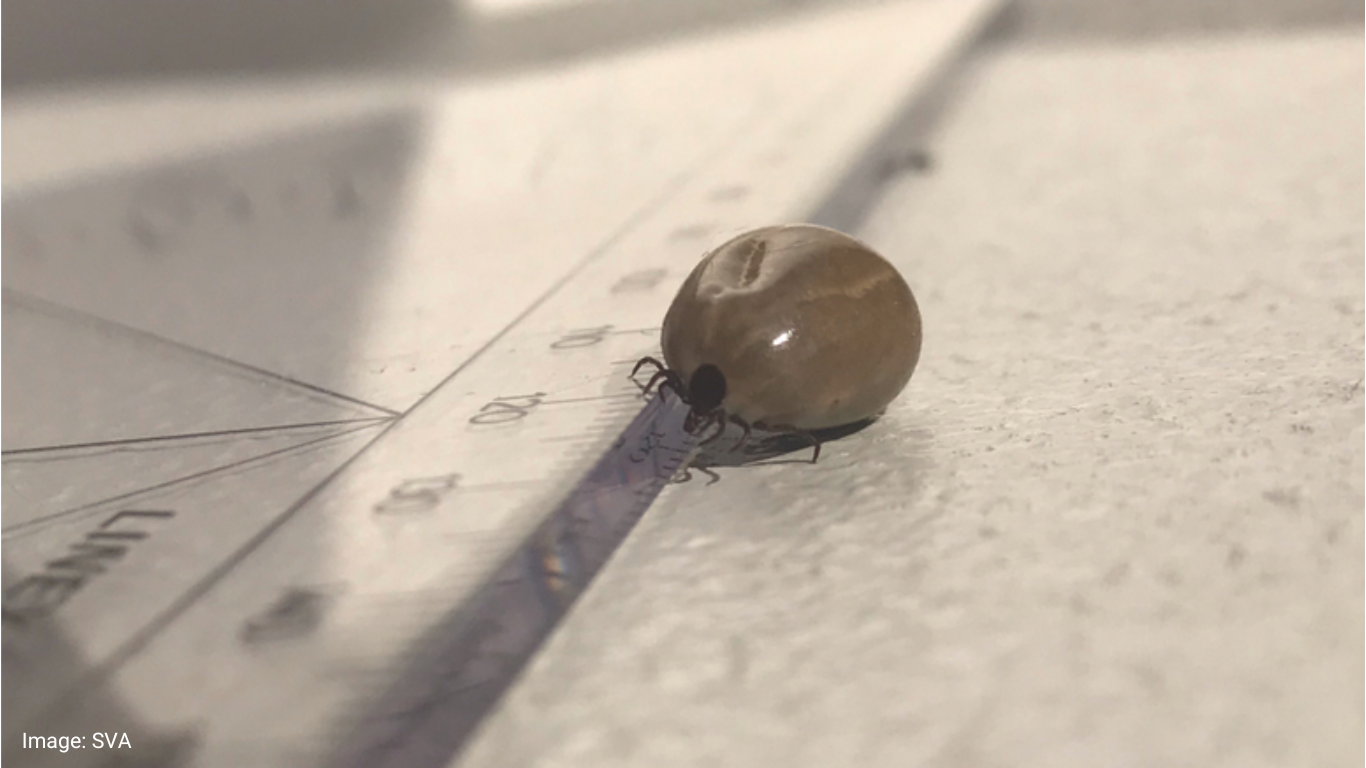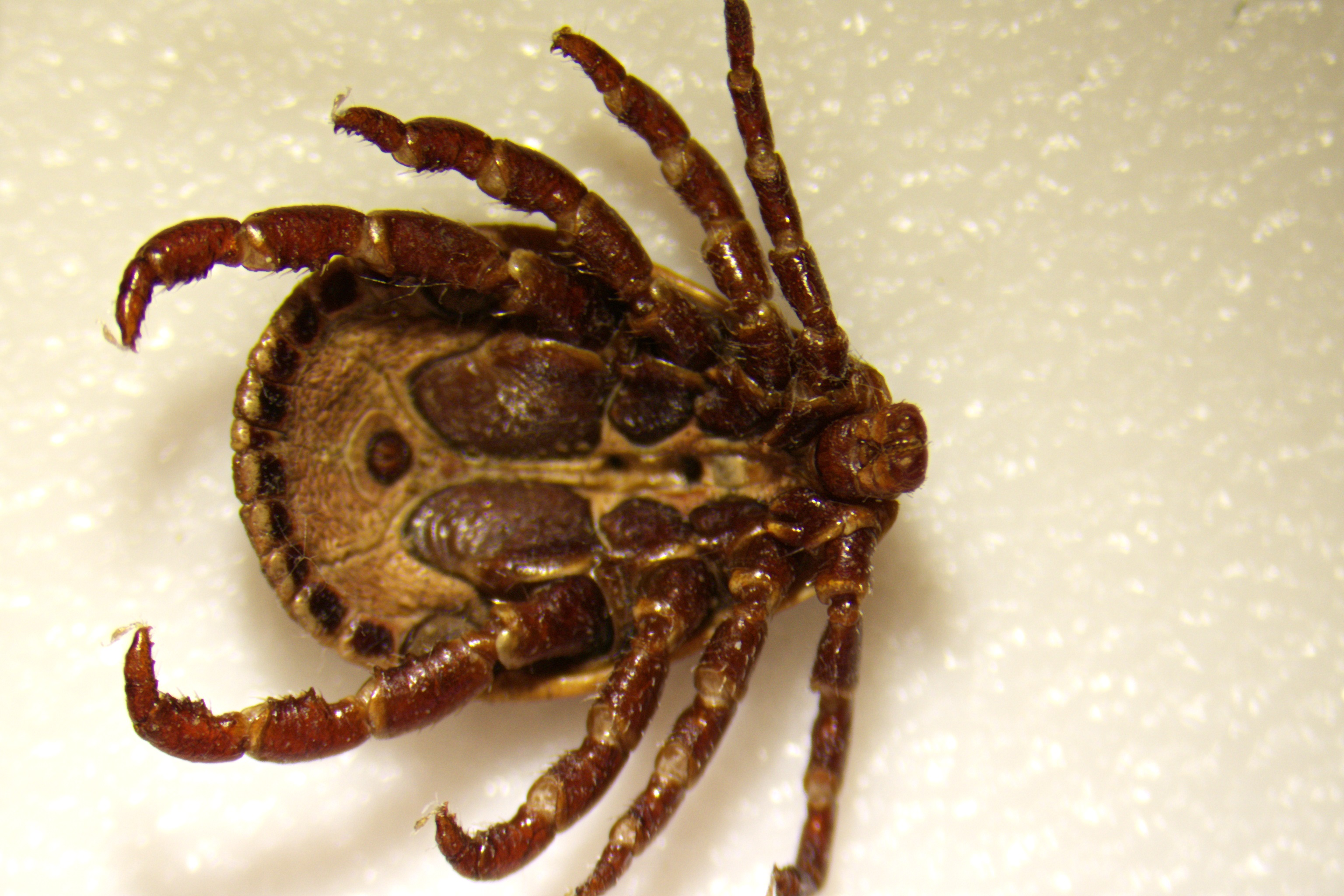The National Veterinary Institute (SVA), Sweden, has just released a new tick tracking tool, in time for tick season. Called ‘Rapportera Fästing’ or Report Tick, this web-based tool will work to simplify the process of collecting and mapping exotic ticks that are being studied at the SVA.
We know from previous citizens science projects that ticks and tick-borne diseases are of high interest and the public are willing to help. People are sometimes afraid or discomforted by ticks since they can carry and transmit pathogens to humans and animals. We hope that this new tool can engage the public to contribute to this collection

Anna Omazic
Researcher at SVA and partner coordinator
As part of the IDAlert project, SVA have developed this tool to employ the public in mapping the distribution of tick species in Sweden. Specifically, the Swedish public are advised to be on the lookout for ‘unusual ticks’ or exotic ticks. Exotic ticks found in Sweden contribute to an increased risk that animals and people can become infected by tick-borne pathogens that do not currently occur in the country. Hyalomma marginatum and Dermacentor reticulatus are examples of tick species that can carry new infectious agents that can affect both animals and humans. These tick species have been encountered to a greater extent in the last 10 years.



SVA have chosen this approach due to previous success. The first records of H. marginatum and H. rufipes in Sweden were reported 2018 (Grandi et al, 2019). SVA started encouraging the public to send photos of ’unusual’ or exotic ticks, which led to repeated findings of adults of these two alien tick species from 2019 and onwards. Thanks to the public’s contribution it was possible to confirm the possibility of Hyalomma nymphs developing to the adult stage.
How will the tool function?
The tool will work in the following manner:
- When you find a tick on your pet, yourself or in nature, go to the web tool (link to the tool) and click on the picture that most looks like the tick you have found.
- Fill in information about the host species and where in the country you made the discovery. Take a photo of the tick and submit the image to SVA via the web tool: https://rapporterafasting.sva.se/reporttick
- Done! Thank you for your contribution to the research on tick species distribution.
Some examples of the ticks that are being tracked are the ticks from the Hyalomma genus and the Dermacentor genus. The hyalomma tick is usually found on large animals (horses and cattle), so it is unlikely that such a tick will be found on household pets like dogs or cats. The hyalomma has striped legs and the female has a brown or dark brown back.
On the other hand, D. reticulatus are usually found on different types of animals, but so far have mostly been found on traveling dogs in Sweden. In terms of size, it corresponds to a regular tick, but a characteristic that differs from it is a special colour pattern.


Citizen Science and the One Health approach
This tool falls under WP4 in the IDAlert project. As the WP focusses on integrating novel data steams into early warning systems, SVA have chosen the citizen science approach by involving the public in reporting the occurrence of ticks in Sweden. It allows the public to:
- report tick findings in Sweden with the help of the Report Tick tool and
- report the occurrences of exotic ticks.
By involving the public in their mapping activity, SVA are guaranteed to gather a wider dataset from across the country, in real time. This also helps with understanding the climate-related determinants of vector-borne diseases as part of the One Health approach, linking humans, animals and their environment. This method of citizen science also allows a closer relationship between scientists, citizens and local animal and public health stakeholders, playing an important role in identifying disease introduction and spread.
Report Tick is being used alongside other novel surveillance tools within the IDAlert project, like automated smart traps, MosquitoAlert and the lab suitcase. These tools together will provide a wealth of on-field data which is being used to develop baseline maps of infectious disease risk based on surveillance of vectors, hosts, and animal reservoirs at study sites.
This tool is on example of how the IDAlert project is working together with the public. Citizen science activities within IDALert will contribute towards studying, monitoring, and fighting the spread of exotic species of mosquitos and ticks capable of transmitting diseases.

Anna Omazic
Researcher at SVA and partner coordinator
Right now, the tool is only available in Sweden, but a roll out is being planned to more countries. The tool will eventually be refined with the addition of an AI image analyser. However, for now, a more hands-on approach is required to gather enough images that will allow the AI to be trained. Eventually other projects will also contribute to the learning, recording, and mapping outputs of this tool so it can be used to inform early warning systems.




